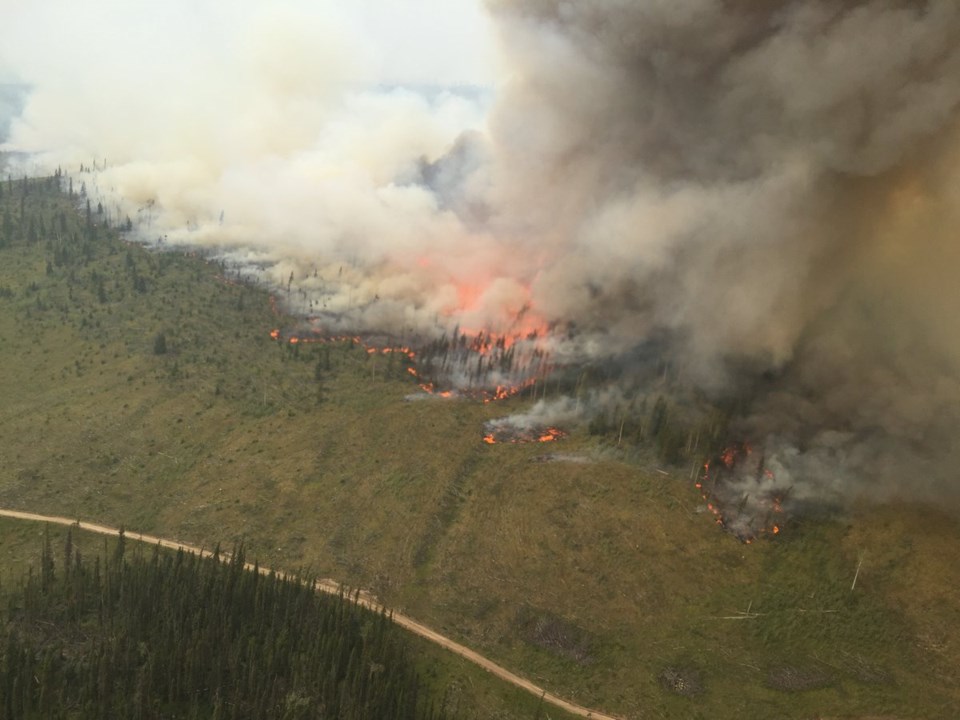Lightning sparked at least a dozen new fires north of Campbell River on Saturday.
The blazes could be growing, or they could be just one tree, fire information officer Donna MacPherson told CHEK News. “A good advantage of the storm that went through [Friday] night where there was the heaviest lightning was it was also raining; that will help some.”
Four human-caused fires on the Island continued to burn.
The Arbutus Summit fire across the inlet from Port Alberni was listed at 25 hectares on Saturday evening, while the wildfire burning near Lacy Lake in the Beaufort Range was still listed at 10 hectares.
The Nanaimo Lakes wildfire, meanwhile, continued to burn out of control about 13 kilometres southwest of Nanaimo.
The B.C. Wildfire Service listed the 182-hectare blaze as 40 per cent contained on the southeast, on the side facing the homes on Nanaimo Lake Road.
The evacuation order for the area west of the fire was downgraded Saturday to an alert. An evacuation alert affecting 77 homes to the east of the fire has been rescinded.
In the Interior, residents in and around the western edge of Quesnel were prepared to leave at a moment’s notice as wildfires raged on nearby and flames from blazes northwest forced almost 90 people from their homes.
Emily Epp of the Cariboo Regional District said helicopter evacuations were needed for at least four families on Saturday when the wildfire cut off access to a forestry service road.
“It is a very rural and remote area, so we estimate there’s about 90 residents in that area,” she said from the Cariboo Fire Centre in Williams Lake.
Residents were being moved to an emergency reception centre in Prince George, roughly 250 kilometres northeast of the evacuation zone, which was expanded from 62 to over 900 properties on Saturday.
Several hours later, a new evacuation alert was added for nearly 2,000 more residents in an area southeast of the existing order, about an hour’s drive west of Quesnel.
Sylvain Gauthier, Quesnel’s fire chief, said 2,500 to 2,700 residents in western Quesnel are already under an alert as they prepare for a possible city-wide evacuation.
Gauthier said they’ve planned alternative transportation for Quesnel residents who don’t have access to a vehicle in the event of an evacuation.
“We’ve contracted a bus company up in Prince George and we’ve placed them on standby,” said Gauthier.
Quesnel lies between Prince George and the Cariboo Fire Centre, 115 kilometres south in Williams Lake. The fire burning near the western part of the city is about 31 square kilometres in size.
Epp said residents should be in preparation mode, making a plan for their family members and thinking about their pets and livestock, ensuring they have essential items in case they need to evacuate.
People won’t be forced to leave immediately under the current alert, though Environment Canada reports a 60 per cent chance of thunderstorms in the area, which could bring more lightning to a region still reeling from a storm weeks ago.
Gauthier said there’s always a fear of lightning, but added the weather patterns had changed rapidly over the day and they weren’t sure what to expect.
“Just hope for the best,” he said.
Epp said the majority of the wildfires in the area were caused by the massive, two-day lightning storm, which ignited fires west of Quesnel to as far as 300 kilometres west in Tweedsmuir South Provincial Park near the province’s coast.
Epp said she could not confirm if the blazes had connected.
She said the expectation for the Cariboo region is more hot and dry weather along with gusting winds, which will likely create an active firefighting day for crews.
“Whenever these thunderstorms go through, they bring increased wind, which causes increased fire activity,” Epp said.



